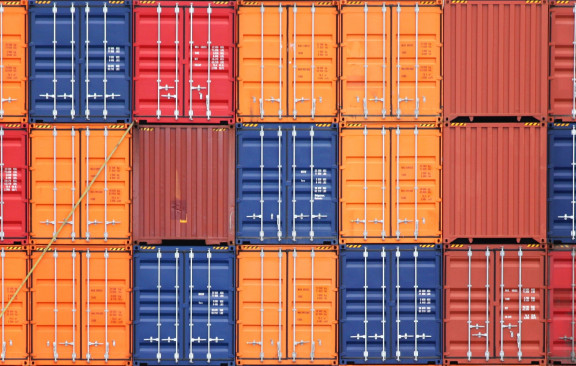We have discussed in some detail the pros and cons of dropshipping. On so many levels it's an excellent way to make money online, particularly if you don't want to/can't put a lot of cash down up front. However, we have also discussed the two main drawbacks of dropshipping. If you need reminding, they are narrow profit margins and potential fulfillment problems. Both of these can be addressed by simply importing products from the same wholesale suppliers that dropship.
When you import, you're given much bigger discounts than if you were dropshipping. That's because the manufacturer or supplier is willing to take a hit on the price per item since they ultimately make more money when they sell in bulk. Moreover, they cut costs on fulfillment expenses.
Regarding fulfillment problems, obviously if you have the products on hand you will have more control over fulfillment. Of course, if you lack organization and a system to keep track of your orders, you shouldn't be in the retail business in the first place.
If you want to make big bucks importing products to sell online, you have to take the business seriously. In this article, we'll give you a brief overview of how to import products to sell online.
What to Expect When You're Importing

Before we get into the specifics of importing, let's talk about some potential barriers to your success. Importing is not an ideal business for the disorganized or the carefree. Altogether, importing and exporting is a $1.2 trillion global business, so you can be sure it's serious. The good news is that the import and export trade is dominated by small businesses (96%), so you're in the majority.
We can give you excellent reasons why you should think very hard before going into the import business:
- You need a lot of capital because you have to buy the products outright, and suppliers will only sell to you in bulk
- You are completely liable for what you sell, so there's a chance you could be sued if there's something wrong or harmful about your products.
- You have to commit to what you import; you can't just drop a product because it's not selling, like you can with dropshipping.
- You could be victimized by scammers and lose your shirt (among other things).
- You could end up with a lot of products you can't unload.
- You have to manage your inventory.
- It can take months before you get your products if you are having them manufactured.
Don't be too intimidated — it's just important to understand the risks involved before embarking on any new business venture. Now that you've read all the fine print first, let's see how the actual money is made in the import business.
Steps to Importing Products From Overseas

1. Choose a Product (or Products) to Sell
You as an online seller are considered an import merchant because you do not have to be tied to a single industry or product line, and you buy direct from the overseas manufacturer to resell back home. Your main consideration is choosing a product you can sell, and you have to be a good salesman or you're not going to get anywhere.
In most cases, it would be smart to choose products that are in high demand, something you yourself would buy or at least know a lot about. It's also good to sell items that are not immediately available, or those that are in high demand. If you are an eBayer, you could discover some probable candidates in the SaleHoo Market Research Lab.
2. Choose the Supplier
Once you've made a list of your products, you need to find suppliers or manufacturers that carry them. You can search for them individually online, or use wholesale supplier directories such as our very own SaleHoo. Make a list of the ones you feel good about and start communicating with them.
Ask questions to find out which suppliers are most likely to give you what you need. They should be able to give you client references, business licensing, compliance information, a physical location for the business, and product samples.
Failure to deliver any of the above is a red flag. Weed out those that can't give you most of this information, and concentrate on the ones that are left. Now you can talk business.
3. Start Negotiations
Be forewarned, this may not be as easy as negotiating with local suppliers, because you will have to deal with people of different cultures who may not communicate well in English. China, for example, is one of the biggest suppliers of imports for US companies. A typical Chinese supplier will want to establish a personal relationship when doing business, because they focus more on morality and trust than legality and contracts.
The end game, of course, is to get the best possible deal you can. Still, there is no reason you can't build fruitful business relationships while you're at it. Keep in mind though, with other cultures you will need to employ slightly different tactics than you're used to.
4, Place Your First Order
With everything set up, you can place your first order, and arrange for a down payment. Most suppliers will not begin processing an order without it. Arrange for shipping as well. Note that you can get your products faster by air, but it will cost you about six times more than by sea.
Some suppliers may offer free on-board freight shipping, which means that the supplier will take care of all transportation costs for loading while the buyer pays for all costs for unloading. Your unloading costs will include the insurance, transport, and operating expenses for actually unloading and storing the merchandise.
Read next: What is Cost, Insurance & Freight (CIF)?
Make sure that the supplier provides you with the following documents, which will be required by Customs when the shipment arrives:
- Commercial invoice
- Packing list
- Detail sheet
- Bill of Lading
5. Pay the Taxes
You don't need an import license except for specific products, but you do need a customs broker for your first shipment. The customs broker will take care of all the paperwork required by the U.S. Customs and Border Protection for entry of the shipment, provide you with information about import duties, and arrange for the required Customs Single Entry Bond in case you default on custom duties.
The custom broker may also make the Import Security filing which is required 24 hours before your shipment leaves the port of origin, unless you or the supplier have already taken care of it. You may have to contract a freight-forwarding company to deliver the products to you when they arrive, unless you arranged for the shipping company to deliver it to you directly.
Start Selling
Now that you have the products, you should start selling them. Ideally, you should have prepared for this eventuality by working out the when, where, and how much. You should have given thought to how you plan to market the products to sell them quickly. That way you can get back your money and import more products.
Importing products at rock bottom prices will enable you to sell them at competitive prices and still make a significant profit. However, just like with dropshipping, there are many pitfalls ahead of you in importing. So keep your head on a swivel and always stay on top of the paperwork
Do you have any insights or experiences with importing that you would like to share? Don't be shy. Tell us all about them!











